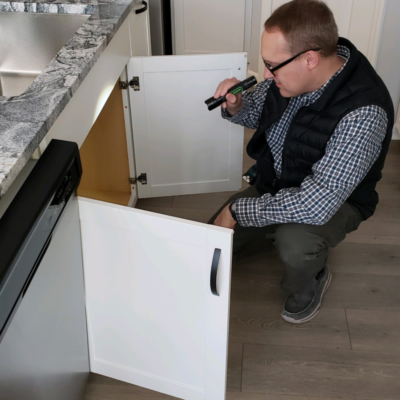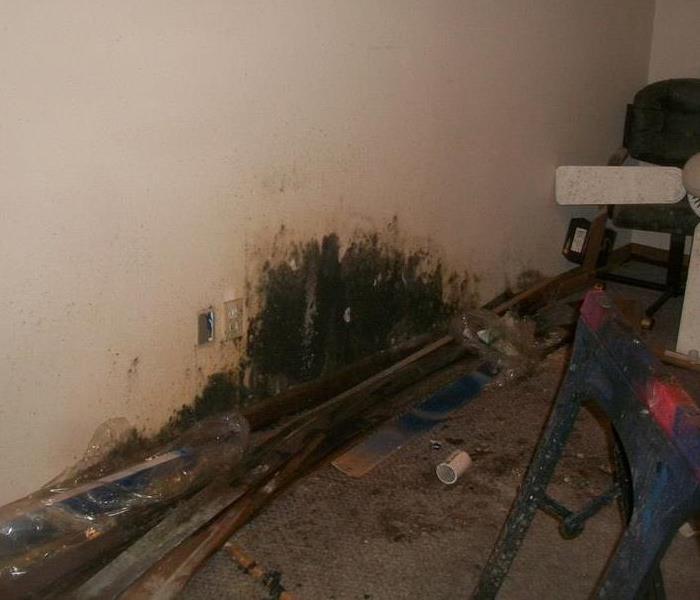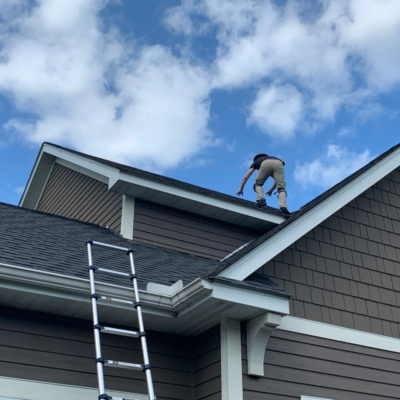Mold Inspection and Testing Services
Your home is your most important investment. As a result, it is always critical to ensure that the environment is safe and comfortable for you and your family. Ninety-four percent (94%) of all respiratory ailments are caused by polluted air, according to the American Medical Association, which also reported that one-third of national health bill is for causes directly attributed to indoor air pollution
Suspect mold? Hire a mold inspection professional
Mold is potentially one of the most dangerous biological contaminants that can be found in your home. Not only does it damage your home, but also it can pose serious risks for your health. More often than not, mold will not be seen by the naked eye. By hiring mold investigation professionals, will be able to inspect your home from top to bottom to find the source of the mold. will provide you with full-service mold inspections and testing services. Once are finished, can educate you on the effects it can have on your home, and provide you with advice on how to solve these issues once and for all.
Why is mold testing so important?
Once you determine you have mold in your home, it is important to get expert mold testing services. mold testing company is not only experienced but also educated in the various facets of mold testing services. Mold is mainly caused by:
High humidity
Leaking pipes
Leaking roofs
Condensation
Poor ventilation
Through expert mold testing services, will be able to find the root cause and source of any mold growth in your home. mold testing company will then provide you with a written mold assessment report of our findings and advice on how to solve the issue.
It’s critical to take care of your business’s industrial hygiene
Your business’s industrial hygiene is of the utmost importance to us. It is the job of environmental hygienist to ensure your environment hygiene is at an acceptable standard and quality. provide environmental inspections as well as environmental testing to make sure there are no workplace hazards or stressors that can cause illness, impaired health, or discomfort to employees from exposure to chemical, physical, biological, or ergonomic hazards.

Mold Remediation and Restoration
Mold is no joke! Mold can be hazardous and dangerous, it can also be delicious like blue cheese, or any cheese for that matter! But, mold that grows in your home or place of business is not a good thing, unless you work at a dairy farm and make cheese. Mold can damage infrastructure and severely as well as personal health. Mold has some common misconceptions about where and how it can grow. If there’s a doubt about mold growing in your home or place of business
Understanding Mold
Confusion and misunderstanding surround the topic of mold and mold remediation. Some restoration businesses even make claims to remove all mold from a building. This is a fallacy. Mold spores occur naturally almost everywhere, both indoors and outdoors. These microscopic spores float along in the air and can enter a home or business through windows and HVAC systems. Consider these facts:
Mold is present almost everywhere, indoors and outdoors.
Mold spores are microscopic and float along in the air and may enter your home through windows, doors, or AC/heating systems or even hitch a ride indoors on your clothing or a pet.
Mold spores thrive on moisture. Mold spores can quickly grow into colonies when exposed to water. These colonies may produce allergens and irritants.
Before mold remediation can begin, any sources of water or moisture must be addressed. Otherwise, the mold may return.
Mold often produces a strong, musty odor and can lead you to possible mold problem areas.
Even higher-than-normal indoor humidity can support mold growth. Keep indoor humidity below 45 percent.
The Mold Remediation Process
Every mold infestation is different, from the amount of mold to the types of materials affected. Each scenario requires a unique solution, but the general process stays the same
The steps listed below illustrate process for a “typical” mold remediation infestation:
Inspection and Mold Damage Assessment
Mold Containment
Air Filtration
Removing Mold and Mold-Infested Materials
Cleaning Contents and Belongings
Restoration
Common Mold Misconceptions
It’s easy to understand why many people struggle to grasp the facts and issues surrounding indoor mold because sensational news stories and advertising cloud and obscure the real issues. Educate yourself with the facts about mold and learn about the mold remediation process.

How to Test for Mold
Mold is a type of fungus that grows in moist environments and reproduces by microscopic seeds called spores. Even if you’re healthy, you can suffer from respiratory issues, skin irritation, and headaches if you’re exposed to dangerous forms of mold
If you share your home with children, elderly loved ones, or anyone with respiratory problems, they’re at an even greater risk. Therefore, it’s very important to learn how to find, test for, and treat mold. This knowledge could improve your health and even save your life.
Look for telltale characteristics. Mold often has a fuzzy appearance but can also look like a stain if it’s growing on a wall or furniture. Its most common colors are black green, brown, or white. Mold can feel like cotton, leather, velvet, or sand paper. It usually gives off a musty or earthy odor. Also look for visible signs of possible water damage such as stains or paint bubbling. This could mean there is mold growth within the wall cavity.
Check the basement. This should be the first place you look. Its underground location makes it especially vulnerable to moisture and humidity buildup. After each heavy rain, look for and immediately treat any water seepage
Check the utility room. Look in and around the clothes dryer duct for mold growth. If it’s not properly ventilated, it can trigger a build-up in humidity in the room. Make sure the duct is vented toward the exterior of the house.

Reasons Why Do-It-Yourself (DIY) Mold Test Kits Are Not Accurate or Advised
While it might be tempting to use DIY Mold Tests—petri dishes set out over a period of time to determine mold presence—to diagnose your household mold, these over-the-counter methods can be deceiving and inaccurate. The results lack enough credibility that lawyers, doctors, insurance companies, and remediation companies do not accept the results. Consumer Reports, in fact, rated four different brands of DIY mold tests “Not Recommended,” citing the following: “In some samples, the vials with media leaked over entire kit. In one, an unopened kit was moldy
No expiration dates on the kit; old media could affect the accuracy and reliability of the results. Label claims that kit can identify toxic mold, but the report the lab sends can’t tell you this. One unused plate came back positive for mold growth, indicating contamination at some point; not very reassuring for post remediation use.”
) No Expiration Dates – DIY mold test kits sit on hardware shelves or storage areas for undisclosed amounts of time, subjecting the agar (gooey stuff) to contaminants. Because there is no readily identifiable expiration date for these kits, despite the requirement that they be sterile, consumers cannot determine how much potential handling or exposure these kits have had.
2) Demonstrated Lab Inaccuracies – There have been numerous cases where I’ve been told of “high mold” counts with a DIY kit when the actual levels are low and vice versa with “low mold” counts with DIY kit when the actual levels very high.
3) Uncontrollability of Shipping and Handling – DIY kits require being sent through the mail system for “lab analysis.” Such processing is unregulated, leaving the package susceptible to elements such as extreme temperatures and humidity, improper handling, and overall shipping lag time. Such factors can contribute to false positives and false negatives.
4) No Air Flow to Measure Mold In Cubic Units– Most standards and guidelines refer to mold spores per cubic meter or coliform forming unit, but obtaining a level of mold per volume of air is impossible without a controlled airflow through the use of a mechanical pump.
5) No Control Sample – A control sample is necessary to validate the elevation of spores and provide a meaningful reference point, but many DIY kits do not offer a dish to take such a comparison sample from another room or outside.
6) Misleading Marketing – Consumers often think that the DIY kit they purchase will quantify and qualify they types of mold they have, but this is not the case. For an additional costs, the petri dishes must be sent out to the lab for analysis (see point 1, 2, 3 for why this is meaningless).
7) No Accredited Laboratory Certification, Endorsement or Chair of Custody – The labs associated with DIY kits are rarely certified (those listed with AIHA-LAP LLC Accredited Labs) and are not endorsed by any accredited agency. Often there is no chain of custody (COC) to properly document the transfer of the kit or to note acceptance of the kit by the lab and critical data such as the date, time of analysis, lab location etc…are often omitted.
8) Kits Do Not Account For Dead Spores: Settling plates and other DIY kits are focused on growing mold, but dead spores can also impact your health. Water damage-makers such as Stachybotys, Chaetomium and Ulocladium may not show up on the DIY kit.
9) No Inspection – DIY kits do no provide an overall understanding of your mold contamination. A critical part of a comprehensive mold investigation is the inspection process, which requires specialized instrumentation such as digital moisture meters, hygrometers, infrared cameras and other tools along with an expert visual observation.
10) Spore Characteristics Make Some More Likely to “Stick” – Mold spores have unique weight, density and air flow characteristics and do not settle at the same rate. Heavier spores, for example, settle on the petri dishes at a quicker rate and take up more of the sample plate. Sticky molds, especially water damage indicators and Black Mold, might not appear as readily on the DIY kits, but this absence could indicate greater growth elsewhere.
Home Inspections
As a trusted industry resource and Certified Home Inspectors, are continually learning new aspects of home systems to provide the most up-to-date and comprehensive inspections available today. During the pandemic, are taking extra precautions to ensure the safety of our clients, agents, employees, & occupants of the homes we inspect. inspectors have undergone specific training and are executing best industry practices. Additionally, are offering inspection walkthroughs via video-chat on the platform “Zoom” for those interested.
What’s included in your inspection? To give you an idea, Single Family Home & Townhome inspections include the following:
Roof system and chimney exterior
Gutters and downspouts
Grading and drainage
Walkways and driveway
Garage doors and safety sensors
Exterior cladding
Deck, stoops, porches and railings
Windows and doors
Attic, insulation and ventilation
Basement, foundation and crawlspace
Ceilings, floors and walls
Heating system
Cooling system
Plumbing system
Drainage sump pump with accessible float
Electrical system
Fireplace damper door and hearth
How invasive is the inspection?
It’s important our clients understand this is a visual inspection only. make observations and test operational functionality of home systems and major appliances but are not diagnosing specific issues like why the gas fireplace won’t start or why the dishwasher purrs a little too loudly. recommend hiring industry-related professionals to diagnose these specific issues.
Is this home inspection the same as a building code inspection?
This inspection is NOT a building code inspection; building code is inspected as the property is being built.
What items are sometimes difficult to inspect due to seasonal limitations?
home inspections are considered a “point in time” inspection; there may be items are unable to inspect on a given day, like: the roof due to snow/rain, the air conditioning system because the temperature is too cold to operate it safely without damage to components, and some of the exterior as it was also covered by snow.